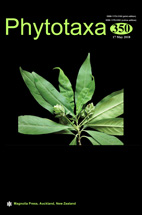Abstract
The Euphorbia adiantoides complex is here considered to consist of four species. This group is readily distinguished from other New World Euphorbia by the combination of two unusual features: entire styles with capitate stigmas and dichasial bracts with relatively long, filiform stipules. Euphorbia sonorae is reduced to a synonym of Euphorbia adiantoides, a taxon disjunctly distributed between Mexico and western South America. The other species of the complex are all restricted to Mexico. Two of these are described as new: E. zamudioi, an endemic to the Sierra Madre Oriental, and E. breedlovei, which is widespread in central and southern Mexico. A key to distinguish the species is provided, as too are data concerning their morphology, distribution, habitat, phenology, common names, and uses. Phylogenetic analyses were conducted using the nuclear ITS and the chloroplast psbA-trnH regions and including multiple samples of each species. The phylogenetic results are not always congruent with morphology, and of the four species herein recognized, only Euphorbia zamudioi is suggested to form an exclusive, well-supported lineage. This species is nested within E. breedlovei, and two collections of E. breedlovei from central Mexico are more closely related to E. zamudioi than they are to other E. breedlovei from southern Mexico. We hypothesize that E. zamudioi arose through peripatric speciation, in which a northern population of E. breedlovei became reproductively isolated and morphologically differentiated from the remainder of the populations of E. breedlovei.

